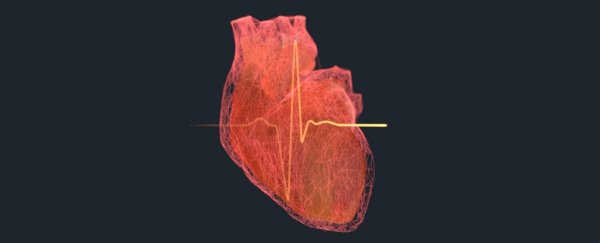Scientists have identified a new cellular mechanism that helps the mammal heart stay in sync with circadian rhythms, and the discovery could help identify why some are at greater risk of cardiac problems.
Circadian rhythms are processes that help to regulate time-based systems in the body around a roughly 24-hour cycle, affecting sleeping and waking, how our metabolism functions, and our cognitive processes too.
It's been known for a long time that the heart is subject to this biological clock, with people showing an elevated heart rate in the morning, and a much lower rate while we sleep at night.
Just how the heart facilitates making these changes throughout the day is still something of a mystery, however. Part of the explanation is signals relayed from the nervous system, but a new discovery made by scientists at the MRC Laboratory for Molecular Biology at the University of Cambridge goes some way to explaining how the heart also independently shifts gears at the cellular level.
In a new paper led by first author and circadian biologist Alessandra Stangherlin, researchers found an ion transport system at work in mouse heart cells that lets cells significantly alter their concentration of potassium (K), sodium Na), and chloride (Cl) ions between day and night, in response to shifting levels of proteins.
This mechanism – which enables heart cells to avoid "macromolecular crowding" in cytosol, the watery part of cytoplasm – helps the heart to maintain homeostasis (or biological equilibrium), even as its activity significantly changes between day and night.
"This homeostatic control mechanism protects against variations in cellular volume," Stangherlin explains.
"The increase in intracellular ions occurs at the end of the rest phase (night for humans) and allows the heart to accelerate its beat rate, in preparation for the increased cardiovascular load imposed by daily activities.
"In heart cells, the change in Na, K, and Cl gradients across the plasma membrane is sufficient to drive a time of day variation in action potential firing, both in vitro and in vivo, even when signals from the nervous system are blocked."
The finding, demonstrated in cardiac cells isolated from the hearts of mice, suggest that circadian rhythms exist at some level in the heart even in isolation to the rest of the body, showing how deeply rooted the biological clock really is.
"The ways in which heart function changes around the clock turn out to be more complex than previously thought," says senior researcher and molecular biologist John O'Neill.
"It opens up the exciting possibility of more effective treatments for cardiovascular conditions, for example by delivering drugs at the right time of day."
Another avenue for further research could be to explore how these cellular clocks might impact the health of vulnerable people, such as shift workers, who end up being highly active at night, at times when their bodies might otherwise expect them to be at sleep.
"We think that when the circadian clocks in the heart become desynchronized from those in the brain, as during shift work, our cardiovascular system may be less able to deal with the daily stresses of working life," O'Neill says.
"This likely renders the heart more vulnerable to dysfunction."
The findings are reported in Nature Communications.
